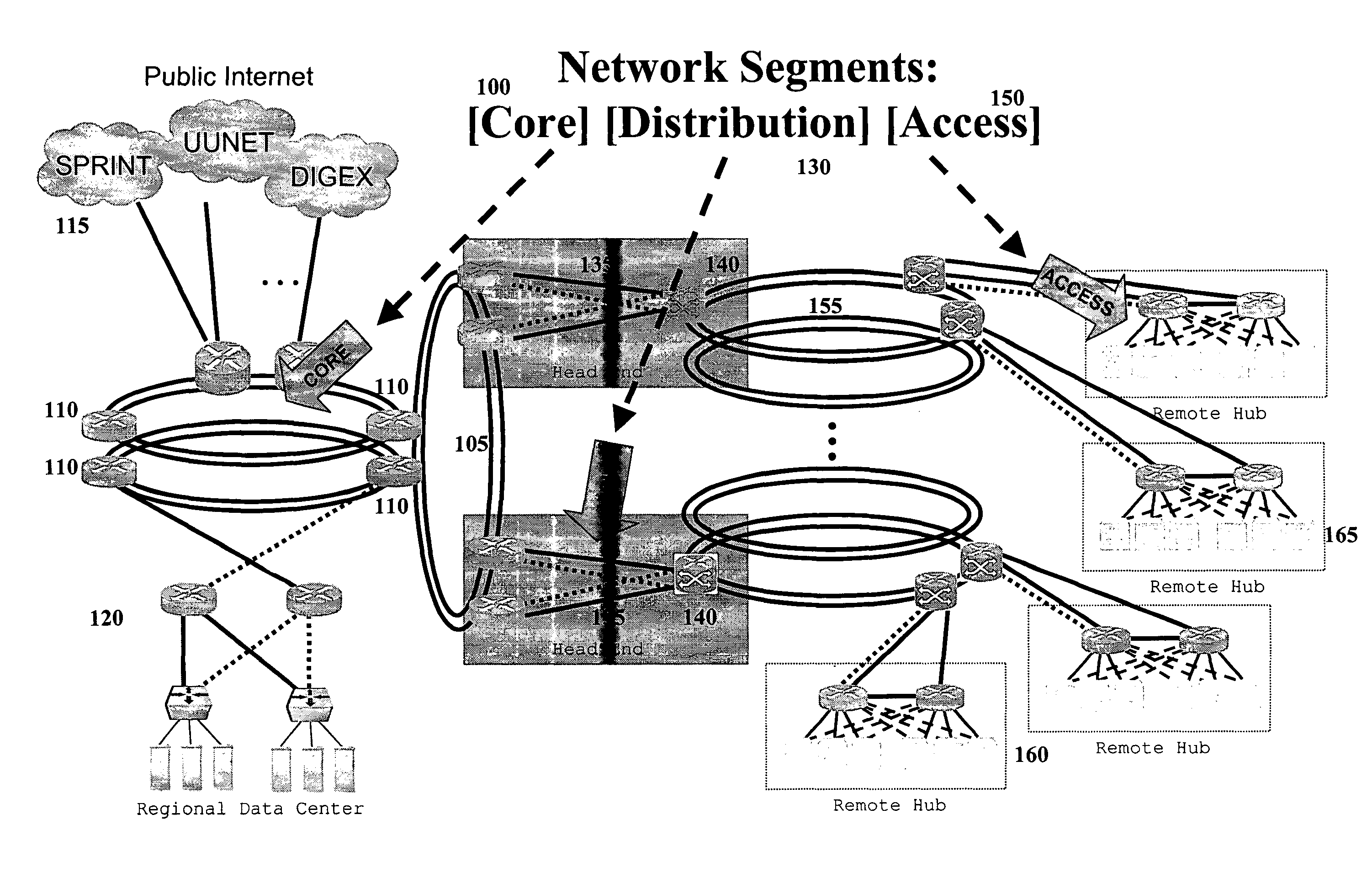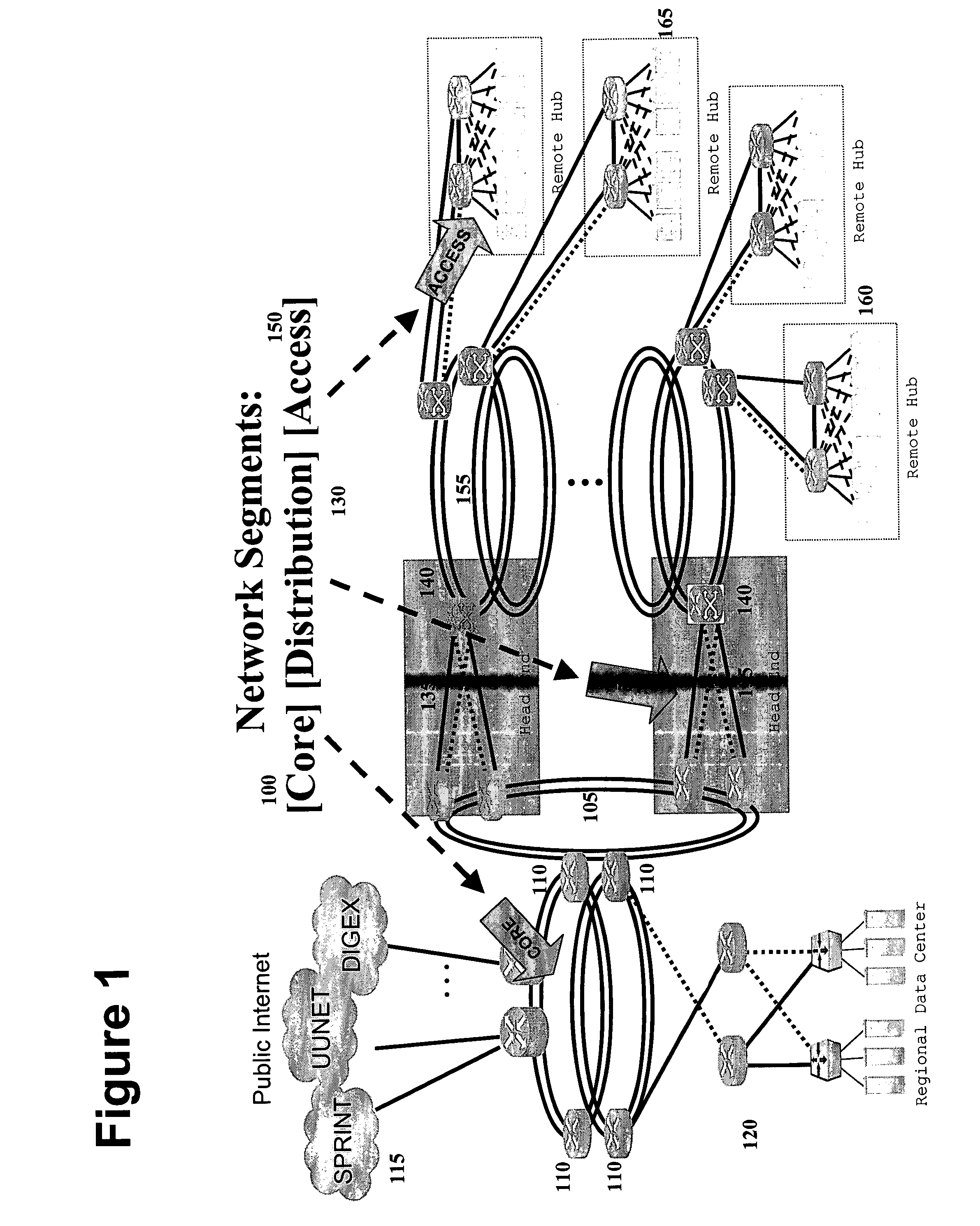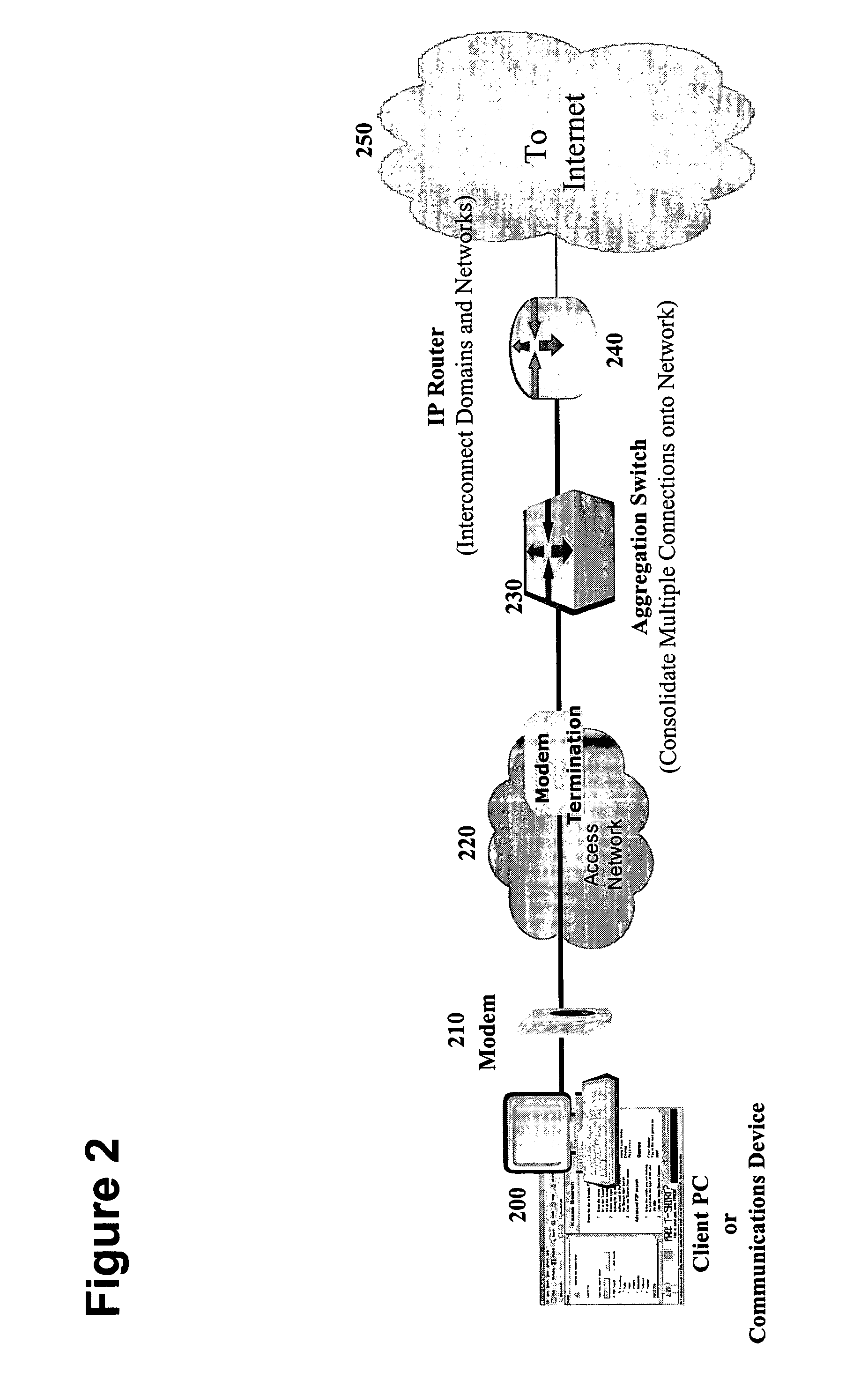Method and apparatus for offering preferred transport within a broadband subscriber network
- Summary
- Abstract
- Description
- Claims
- Application Information
AI Technical Summary
Benefits of technology
Problems solved by technology
Method used
Image
Examples
Embodiment Construction
[0055]In one embodiment, the present invention provides a marking, also herein interchangeably referred to as a content tag, which is associated with content traveling across a network. The content tag provides information, for example, concerning the format, origin, client application, type, or class of the content.
[0056]In one embodiment, the present invention allows a network access operator—such as, for example, a DSL carrier, an MSO, an ISP, or WISP or any broadband or public or private network access provider—to verify, authenticate and offer differentiated service for content transmissions that are marked at an earlier point in distribution, for example, by associating them with a marking or content tag. That earlier point can be at the time of content creation, origination of transmission by a content server or peer client application, or at a midway transmission or distribution point. The marking or content tag can be associated with a piece of content regardless of the for...
PUM
 Login to View More
Login to View More Abstract
Description
Claims
Application Information
 Login to View More
Login to View More - R&D Engineer
- R&D Manager
- IP Professional
- Industry Leading Data Capabilities
- Powerful AI technology
- Patent DNA Extraction
Browse by: Latest US Patents, China's latest patents, Technical Efficacy Thesaurus, Application Domain, Technology Topic, Popular Technical Reports.
© 2024 PatSnap. All rights reserved.Legal|Privacy policy|Modern Slavery Act Transparency Statement|Sitemap|About US| Contact US: help@patsnap.com










